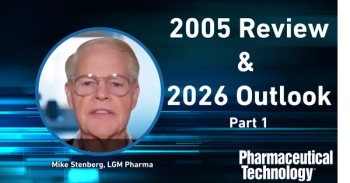
Committee on Energy and Commerce Assesses Influenza Vaccine Effectiveness
The Committee on Energy and Commerce met to assess influenza vaccine effectiveness, and changes for the 2015-2016 season.
On Nov. 19, 2015 members of the United States House of Representatives Committee on Energy and Commerce held a hearing to examine the US public health response to influenza, and the issues that arose from the 2014–2015 vaccine mismatch-which was associated with a 23% overall effectiveness rate. The flu season begins as early as October and ends as late as May, and in four of the past ten years the seasonal effectiveness of the flu vaccine has fallen below 40 percent.
The 2014-2015 mismatch resulted in low effectiveness rates for the vaccine, which was 14% for those 50 years or older and 12% for those in the age range of 18–49 years. This constitutes the lowest effectiveness rate the CDC has reported in the past five years.
Health officials have begun to detect increased evolution of the influenza virus, which many scientists believe is caused by a rise in trade and travel. The intermingling increases the likelihood that different strains of virus will combine, forming new strains that are typically more difficult to characterize.
The antigenic testing used to determine the predominant influenza strains in the US is based on the Hemagglutination inhibition (HAI) assays and was developed in the 1940s. In 2011, the World Health Organization (WHO) acknowledged the assay had difficulties in recognizing changes in the influenza virus.
Changes for the 2015–2016 Flu Season
In response to the 2014–2015 vaccine mismatch, the United States Department of Health and Human Services (HHS) created an action plan to minimize the possibility of an antigenic drift in the virus and produce a supplemental monovalent vaccine, if necessary.
The HHS-developed action plan recommends the following: immediate implementation of a global early detection system (including advanced molecular detection) for the influenza virus; a formal chain of communication between manufacturers and public health agencies; candidate vaccines that are antigenically similar to a drifted strain; and matched vaccine potency reagents for the new candidate vaccine. The action plan allows for a potential late-season change to the flu vaccine or the creation of a monovalent rescue vaccine.
Crafting a manufacturing back-up plan
The committee also mentioned changes in the vaccine manufacturing process, and the launch of the Influenza Vaccine Manufacturing Improvement (IVMI) initiative. IVMI’s primary goal is to simplify the vaccine manufacturing process and increase production by generating vaccine seed strains and potency and sterility assays.
There are currently seven manufacturers in the US that produce 14 influenza vaccines, according to the FDA. Unlike other vaccines available in the US, the flu vaccine is approved, produced, and distributed in a six-month time frame. Part of a new plan for manufacturers includes the production of more recombinant protein, cell-based, and quadrivalent vaccines-all of which provide for faster start-up in the manufacturing process. Additional technological improvements to the manufacturing process, the committee noted, could save four to six weeks in manufacturing and formulation of the vaccine.
The committee also commented on the potential for development of a universal flu vaccine. The National Institute of Allergy and Infectious Disease (NIAID) is providing funding for research on universal candidates. On Nov. 9, 2015,
Despite last year’s mismatch, US public health agencies assert the flu vaccine is still the most effective way to prevent the virus. The Committee on Energy and Commerce plans to reassess virus preparedness in the coming months as flu season becomes more severe.
Source:
Newsletter
Get the essential updates shaping the future of pharma manufacturing and compliance—subscribe today to Pharmaceutical Technology and never miss a breakthrough.




